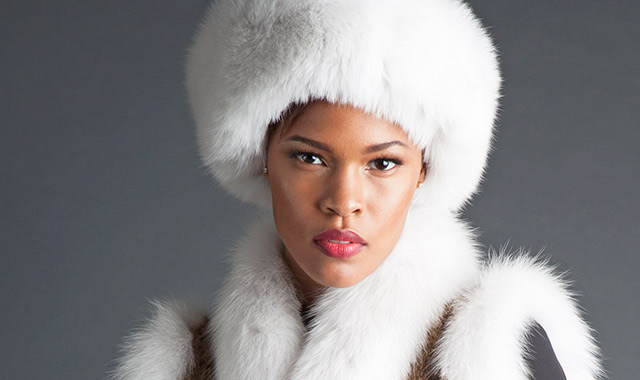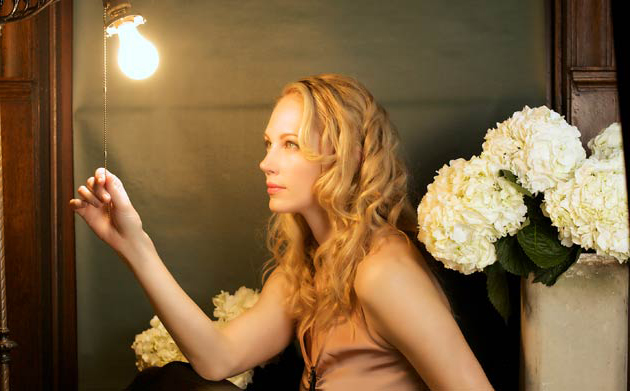A new fur coat is an investment that could be shared for generations. Before you buy a warm fur this winter, here are a few buying tips from the experts at York Furrier, in Elmhurst.

With winter just setting in, you might be in the market for a fur coat. Whether you’re buying your first fur or updating your wardrobe, there are some things you should know before making this all-important purchase.
“The key to getting started is doing your homework and finding a furrier that is helpful, demonstrates longevity and has good ratings within the industry,” says Kathy Rezny, co-owner of York Furrier, in Elmhurst. “A quality fur coat is going to last a long time if it’s well-maintained and taken care of properly.”
The process starts by finding a reputable furrier, that is, a professional who works with furs. Rezny is a third-generation owner of York Furrier, which has been around for 83 years.
“A furrier is an expert in the field. They know product types, garment construction and can help select the right fur for each individual,” she says. “If you’re looking for accessories like fur boots, department stores are a good choice as well.” Furriers also provide a full range of product care services such as repairs, restyle of older garments, annual cleanings and on-site storage, during the summer months, in humidity and temperature-controlled vaults.
Your search for the right furrier may also begin online. Many furriers will have a website or a Facebook page that shows consumer comments about the company’s products and services. York Furrier even posts photos of satisfied customers and their coats. “It’s one more way to get the word out about the products that we offer,” Rezny says.
Don’t hesitate to seek recommendations from friends and co-workers who are fur owners. “And if you see someone walking down the street in a great garment, don’t be afraid to ask them where they got it,” Rezny says.
Be prepared to spend an hour or two during your first visit. “If it’s their first fur purchase, we’ll start from scratch,” Rezny says. “We’ll show them different types of furs, have them try some on, and ask them questions about their lifestyle. For example, is the fur more for work or black-tie evenings? Most furs today are versatile. We have garments that will take you from blacktop to black tie. We have sheared minks that are reversible. You can wear it on the rain silk side to run errands, or switch it to the sheared side and wear it to dinner and an evening out.”
When trying on fur coats, be sure to check the tag on the inside, where you’ll find a description of the garment, which indicates sizing and the origin of the fur. “Certain countries have better fur products,” Rezny says. “The best mink pelts in the world are from the United States. U.S. mink has a nice silky texture and is lighter in weight. Sable comes from Canada and Russia. Fox is often Norwegian. Lamb leathers come from Italy. Each country has its own forte. If you want something fun, the new feather fox is flattering and lightweight. If you want something hardy that will last a long time, a mink is amazing for durability.”
While looking inside the coat, check for any loose threads. Examine the sewing on the seams and hems, which both should be straight and tight. Also, check to see whether fur is properly attached. Many fur coats will include an inner pocket with enough room for lipstick or a key. Once you decide on a fur coat, the furrier will put your monogram in the lining, while reversible garments will have a personalized name label sewn into the pocket lining.
Not sure what length to buy? It depends on your lifestyle. Full-length is ideal for formal occasions. A three-quarter-length walking coat can be worn casually and formally – for errands, shopping, a luncheon, work meeting, or transporting kids to their activities. A jacket or bolero is perfect for outdoor activities.
When Rezny took over her family business in the 1980s, there were 50 fur designers creating fur fashions; now there are more than 500 around the world. Among today’s hot designers including fur in their collections are Michael Kors, Zac Posen, Carolina Herrera, Badgley Mischkha, Zandra Rhodes, Dominic Bellissimo, Zuki, and Andre and Lisa Bisang.
“More and more, customers are concerned about the fashion and the fit,” says Rezny. “It doesn’t matter what type of fur – it’s what fashion works for their size, shape and lifestyle. Many people are in tune with what’s new, what’s hot, what’s been on the runway. The fur business changes and evolves. There are always new and creative techniques, and all designers put their own spin on it. It’s fun to see that change from year to year and how the consumers respond to the new fur collections.”
Color all depends on the customer’s taste. Mink fur is available in natural colors such as black, brown, ivory and gray. If you’re looking for a fox fur, popular colors are red, silver, white or black. Sheared beavers and minks come in a rainbow of colors.
Sharon Kerr-Zygmunt will never forget her first fur coat. “My husband bought me a Blackglama mink swing coat 15 years ago,” she says. “It’s absolutely stunning, and it means a lot to me. It’s a piece that will never go out of style.”
Every year, the Lombard resident adds to her collection, whether it’s a new coat, transitional piece or an accessory. She knows what she likes and what cuts and styles look best for her. “Fur goes with everything,” she says. “It’s beautiful, it gives you a feeling of luxury and it’s warm, which helps when you live in Chicago.”
Kerr-Zygmunt has some advice for anyone looking for their first fur. “Look for something that gives you a good feeling when you try it on,” she says. “A fur coat is something that can last forever.”
Most furs range in cost between $3,000 and $30,000, depending on style, pelt and trim. Rezny says the more pelts you use, the more expensive the coat will be. If you’re looking for the latest fashion, August is the best time to start shopping. If you’re more price-conscious, you might consider waiting for post-holiday sales that can last into March.
“You don’t have to break the bank to own a fur coat,” Rezny says. “Many coats are passed down from grandmother to daughter to granddaughter. With proper care, and perhaps utilizing a furrier’s restyling services, a family can use and enjoy a single fur garment for years. That’s what makes owning a fur coat such a great investment.”




















































